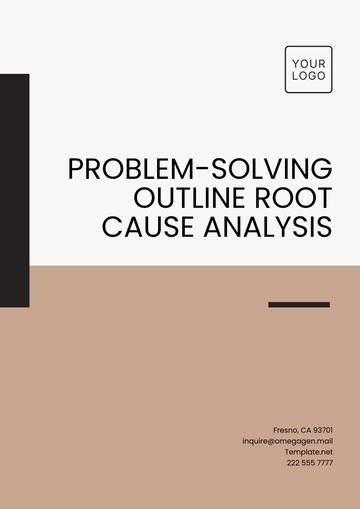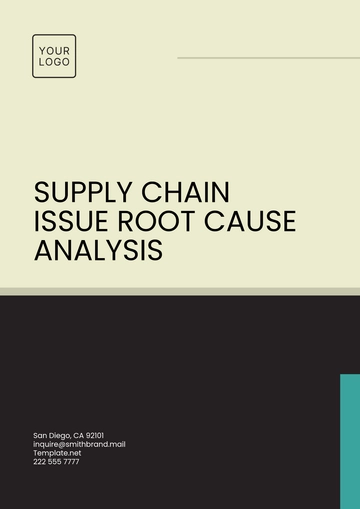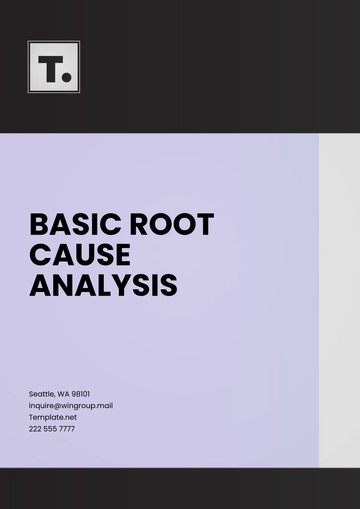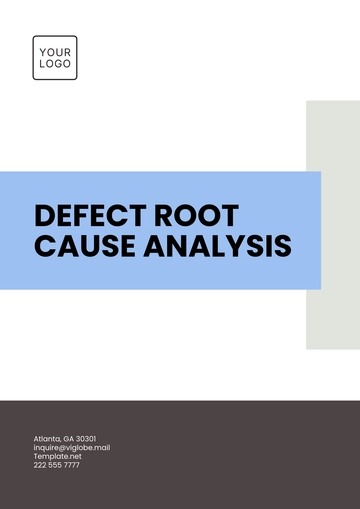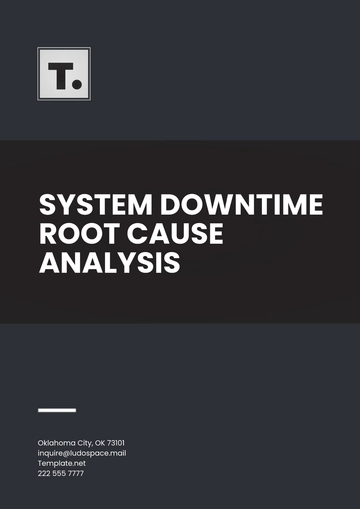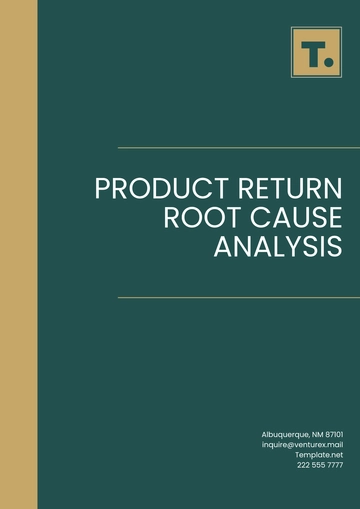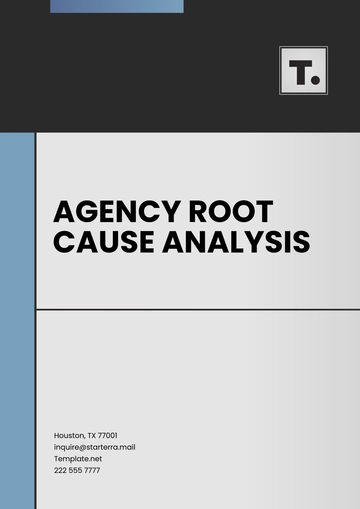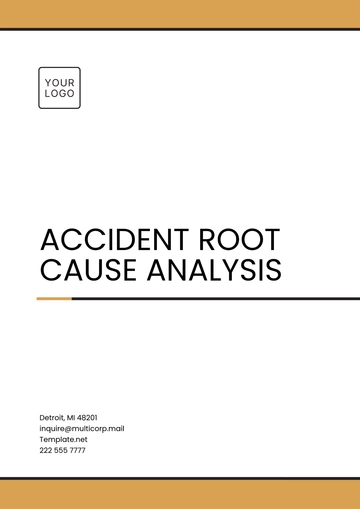Free Operations Service Quality Analysis Report
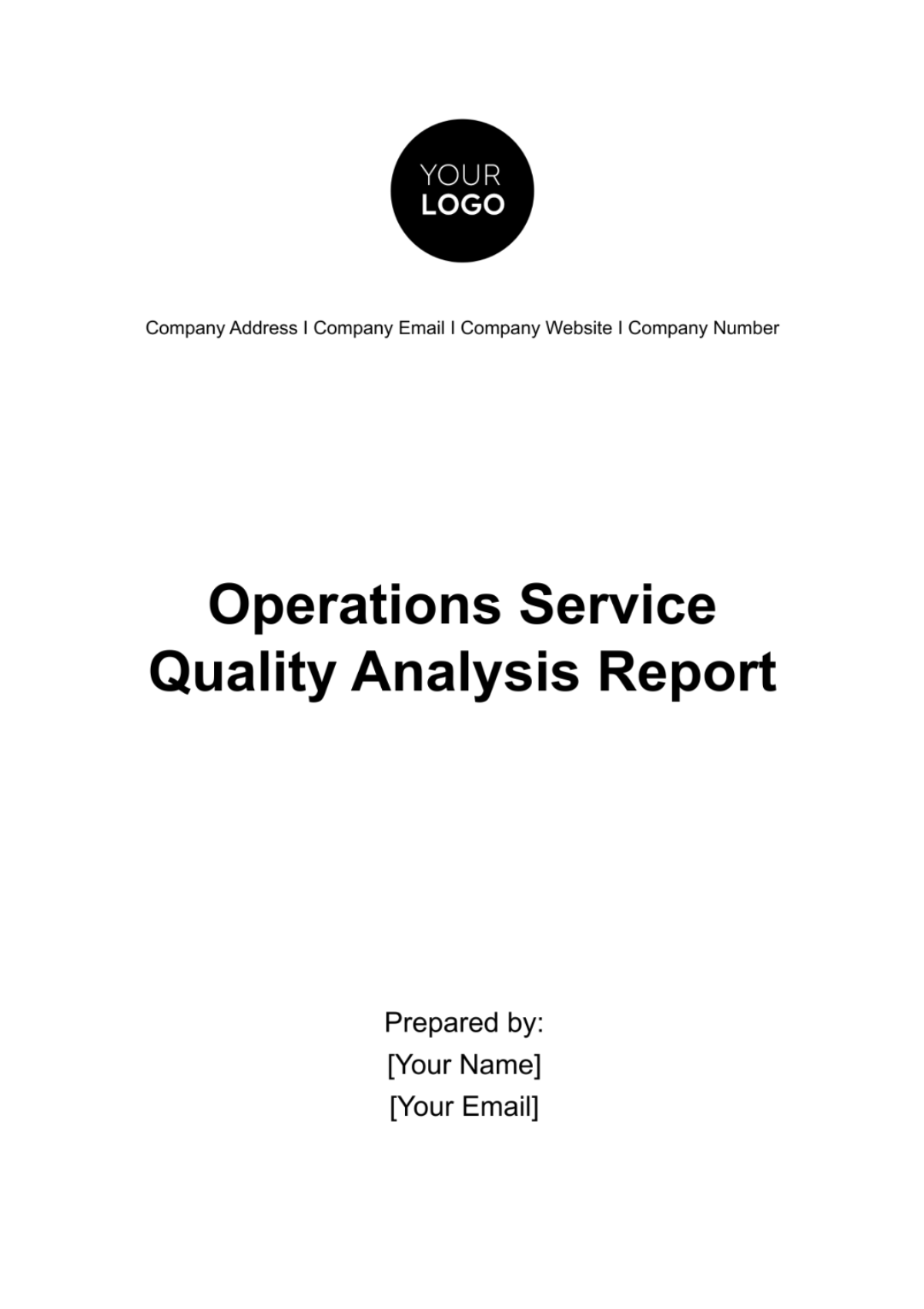
I. Executive Summary
A. Brief Overview
This report provides an in-depth analysis of our organization’s operational services. It scrutinizes various facets of our operations, including customer service, product quality, delivery times, and employee performance. Additionally, it delves into an analysis of customer feedback and satisfaction levels, providing a holistic view of our operations. The analysis spans the last fiscal year, offering a substantial timeframe to evaluate our performance and progress.
B. Key Findings
Our analysis has unearthed several significant findings. We have observed a consistent uptick in our production volume and customer satisfaction score over the year, indicating positive growth and improved customer experience. However, our analysis has also highlighted areas that necessitate improvement, such as product quality. Our Net Promoter Score and customer retention rate have shown encouraging trends, signaling increasing customer loyalty and satisfaction.
C. Recommendations
Drawing from our findings, we have proposed a set of actionable recommendations. These recommendations encompass short-term improvements and long-term strategies aimed at addressing the identified areas of improvement and enhancing our operational efficiency and service quality. They include initiatives such as improving customer service training, enhancing quality control measures, optimizing resource allocation, investing in technology, developing a customer feedback program, and implementing a continuous improvement program.
II. Introduction
A. Purpose of the Report
The purpose of this report is to conduct a comprehensive analysis of our organization’s operational services. By scrutinizing various aspects of our operations, we aim to gain a deeper understanding of our current performance levels. This analysis will help us identify our strengths, uncover potential weaknesses, and highlight opportunities for improvement. The insights gained from this report will guide our strategic planning and decision-making processes, ultimately leading to enhanced operational efficiency and service quality.
B. Scope of the Report
The scope of this report is broad and multifaceted, encompassing all areas of our organization’s operations. This includes, but is not limited to:
Customer Service: We will assess the effectiveness of our customer service department by examining key performance indicators such as response times, resolution rates, and customer satisfaction scores.
Product Quality: An evaluation of our product quality will be conducted, taking into account factors such as product performance, reliability, and consistency.
Delivery Times: We will analyze our delivery times to determine whether we are meeting our commitments and expectations set with our customers.
Employee Performance: Our employees play a crucial role in our operations. Therefore, an analysis of employee performance metrics will be included to identify areas of excellence and areas that may require additional training or resources.
Customer Feedback and Satisfaction: Customer feedback is a valuable resource for understanding how our operations and services are perceived. We will analyze customer reviews, ratings, and surveys to gauge our performance from the customer’s perspective.
III. Methodology
A. Data Collection
Data collection is the first and one of the most critical steps in our analysis. We have used a comprehensive approach to gather data from various sources:
Primary Data: Primary data refers to the first-hand data collected for the purpose of this analysis. This includes:
1.1. Operational Data: We have extracted data from our operational systems, which includes information on product quality, delivery times, and employee performance metrics.
1.2. Customer Surveys: We have conducted customer satisfaction surveys to gather direct feedback from our customers. These surveys were designed to measure customer satisfaction levels and identify areas for improvement.
Secondary Data: Secondary data refers to the data that already exists and was collected for other purposes. This includes:
2.1. Industry Reports: We have referred to various industry reports and studies to understand the industry benchmarks and standards. This helped us compare our performance with our competitors.
2.2. Online Resources: We have also utilized online resources to gather additional information relevant to our analysis.
B. Data Analysis
Once the data was collected, it was subjected to a rigorous analysis process. Our data analysis process is divided into several stages:
Descriptive Analysis: The first step in our analysis was to conduct a descriptive analysis. This involved calculating basic metrics such as averages, frequencies, and percentages to understand the general trends and patterns in our data.
Trend Analysis: We then conducted a trend analysis to identify patterns over time. This helped us understand whether our performance has been improving, deteriorating, or remaining constant over the period under review.
Comparative Analysis: Comparative analysis was conducted to compare our performance with industry benchmarks. This helped us understand our position in the market and identify areas where we need to improve.
Predictive Analysis: Finally, we conducted a predictive analysis using statistical models. This allowed us to forecast future performance based on past trends and patterns. This will help us prepare for future challenges and opportunities.
IV. Findings and Analysis
A. Operational Efficiency
Operational efficiency is a critical aspect of any organization. It measures how well an organization uses its resources to achieve its goals. The following table presents some key metrics related to our operational efficiency:
Metric | Q1 | Q2 | Q3 | Q4 |
|---|---|---|---|---|
Production Volume | 1000 | 1050 | 1100 | 1150 |
Defect Rate | ||||
Utilization Rate |
In Q1, our production volume was 1000 units. This increased steadily over the year, reaching 1150 units in Q4. This indicates a positive trend in our production capacity. This positive trend in production volume is a strong indicator of growth and operational success. It suggests that our production processes and strategies have been effective, allowing us to increase output without compromising on quality. The increase in production volume could be attributed to various factors such as the introduction of more efficient production techniques, expansion of our production facilities, or an increase in demand for our products.
These improvements in operational efficiency are likely the result of various strategic initiatives undertaken by our organization such as process improvements, employee training, and investment in better equipment. The positive trends in these metrics suggest that these initiatives have been successful. However, it’s important to remember that operational efficiency is not a static goal but a continuous process. We need to keep monitoring these metrics, identify new areas for improvement, and adapt our strategies based on changing market conditions and business goals.
B. Service Quality
Service quality is a crucial aspect of our operations, directly impacting customer satisfaction and loyalty. The following chart presents the first response time related to our service quality:
First response time, a key aspect of our service quality, shows a consistent decrease over the year. This is a positive trend, indicating that our team has been able to respond to customer queries more swiftly over time. Quick response times are crucial in maintaining high service quality as they can significantly impact a customer’s experience. Customers appreciate prompt responses as it shows that their concerns are being taken seriously and addressed promptly. The consistent improvement in this metric over the year suggests that our initiatives aimed at improving response times have been effective. This could be due to various factors such as improved processes, better resource allocation, or enhanced training for our customer service team.
The enhancements in service quality are the outcome of various strategic initiatives undertaken by our organization such as process improvements, employee training, and investment in superior equipment. The positive trend suggests that these initiatives have been successful. However, it’s important to remember that service quality is a dynamic goal that requires continuous effort. We need to identify new areas for improvement, and adapt our strategies based on evolving customer expectations and business objectives.
C. Customer Satisfaction
Customer satisfaction is a key indicator of our service quality and operational efficiency. The table below presents some key metrics that give us insights into our customer satisfaction:
Metric | Q1 | Q2 | Q3 | Q4 |
|---|---|---|---|---|
Net Promoter Score (NPS) | 40 | 45 | 50 | 55 |
Customer Retention Rate | ||||
Customer Churn Rate |
We began the year with an NPS of 40 in Q1, which progressively increased throughout the year, culminating at 55 in Q4. This is a significant increase and suggests that our customers are increasingly likely to recommend our services to others. The steady rise in this score over the year indicates that our customers’ loyalty and advocacy for our brand have been strengthening. This could be due to various factors such as improved service quality, effective problem resolution, or enhanced customer interaction.
These enhancements in customer satisfaction are likely the outcome of various strategic initiatives undertaken by our organization such as process improvements, employee training, and investment in superior equipment. The positive trends in these metrics suggest that these initiatives have been successful. However, it’s crucial to remember that while an increase in NPS is a positive sign, it needs to be evaluated in conjunction with other factors like operational efficiency to get a comprehensive picture of our performance.
D. Areas of Improvement
Identifying areas of improvement is an essential part of our analysis as it helps us understand where we need to focus our efforts to enhance our operations and services. The table below presents the key metrics that give us insights into our areas of improvement:
Metric | Q1 | Q2 | Q3 | Q4 |
|---|---|---|---|---|
Product Returns | 5% | 4.5% | 4% | 3.5% |
Complaint Resolution Time (hours) | ||||
Negative Reviews Rate |
The Product Returns percentage is a critical metric as it provides insights into the quality of our products and the satisfaction of our customers. We started the year with a return rate of 5% in Q1, which gradually decreased throughout the year, reaching 3.5% in Q4. The gradual decrease in this percentage over the year suggests that our efforts to improve product quality have been effective. This could be due to various factors such as improved production processes, better quality control, or enhanced customer service.
The data in the table provides a comprehensive snapshot of our areas of improvement. It reveals that our strategies to address these areas of improvement have been effective. These improvements are likely the outcome of various strategic initiatives undertaken by our organization such as process improvements, employee training, and investment in superior equipment. The positive trends in these metrics suggest that these initiatives have been successful.
V. Recommendations
These recommendations aim to address the areas of improvement identified and enhance our operations and services:
A. Short-term Improvements
Short-term improvements are actions that can be implemented immediately or in the near future. These are typically easier to implement and have a quicker impact to aid our success. Here are some potential short-term improvements:
Improve Customer Service Training: Based on the feedback received, there may be a need to enhance our customer service training to ensure that all team members are equipped to handle customer queries effectively and efficiently. This could involve introducing new training modules, providing refresher courses, or implementing a mentorship program.
Enhance Quality Control Measures: To reduce the product return rate, we could strengthen our quality control measures. This could involve more rigorous testing procedures or more frequent quality checks during the production process. We could also consider investing in advanced quality control equipment or software.
Optimize Resource Allocation: Our data shows that there may be opportunities to better utilize our resources. This could involve reallocating resources to areas where they are needed most or investing in more efficient equipment or technology. We could also consider implementing resource management software to help us track and optimize resource usage.
B. Long-term Strategies
Long-term strategies on the other hand, are actions that require more time and resources to implement but can have a significant impact on our operations and services in the long run. Here are some long-term strategies:
Invest in Technology: Investing in new technology or upgrading our existing systems can help improve our operational efficiency and service quality. This could involve implementing a new customer relationship management (CRM) system, upgrading our production equipment, or adopting new technologies like AI or machine learning. We could also consider partnering with technology providers or hiring technology consultants to help us identify and implement the most suitable technologies.
Develop a Customer Feedback Program: A formal customer feedback program can help us better understand our customers’ needs and expectations. This could involve regular surveys, feedback sessions, or a dedicated feedback portal. We could also consider using advanced analytics to analyze customer feedback and derive actionable insights.
Implement a Continuous Improvement Program: A continuous improvement program can help us regularly identify and address areas of improvement. This could involve regular audits of our operations, employee training programs, or a suggestion scheme for employees to share their ideas for improvement. We could also consider implementing a continuous improvement framework like Lean or Six Sigma.
VI. Conclusion
A. Summary of Findings
Our analysis has unearthed a wealth of insights into our operations and services. We have pinpointed areas where we excel, such as the consistent increase in production volume and the improvement in customer satisfaction. However, our analysis has also shed light on areas that require our attention and improvement, such as product quality and resource utilization. The positive trends in our customer satisfaction score and net promoter score are encouraging, indicating that our customers are finding increasing value in our services.
B. Final Thoughts
The insights gleaned from this report underscore the importance of a continuous improvement mindset in our operations and services. While we have made commendable strides in certain areas, there are still opportunities for us to elevate our performance. The short-term improvements and long-term strategies recommended in this report are designed to address these areas and enhance our operational efficiency and service quality.
This report serves not just as a reflection of our current performance, but also as a guide for our future endeavors to improve our operations and services. It provides a clear direction for our strategic planning and decision-making processes. However, it’s crucial to remember that the business landscape is dynamic and ever-evolving. Therefore, our strategies and initiatives should be flexible and adaptable, ready to respond to new data and shifting market conditions.
- 100% Customizable, free editor
- Access 1 Million+ Templates, photo’s & graphics
- Download or share as a template
- Click and replace photos, graphics, text, backgrounds
- Resize, crop, AI write & more
- Access advanced editor
Assess and enhance service quality with the Operations Service Quality Analysis Report Template on Template.net! This editable report offers a customizable solution to analyzing and improving service quality. This is your go-to solution in continuous improvement and customer satisfaction! Make the report creation easier by utilizing our AI Editor Tool!


